A silver lining to come from social distancing is that it’s forced us to transition to virtual solicitation, both over the phone and by video chat. And it’s actually working!
Amy Eisenstein, Fundraising Influencer and Founder, Campaign Toolkit
While fundraising events get canceled all over, and in-person meets become a strict no-no, virtual solicitations are becoming the new normal.
However, this transition is not an easy feat. A significant chunk of nonprofit donations (82%) still come from events, grants, and sponsorships while only 18% of donations come from virtual asks.
Virtual fundraising asks can be tricky because it lacks the personal human touch. Combined with an ongoing pandemic, making winning donations via virtual asks becomes hugely complex.
To help you navigate these challenges and make your virtual solicitations more effective, here’s a step by step guide.
Step 1: Revamping your case for support
First of all, you need to rephrase why your donors should support your cause. It needs to be more aligned with the current situation. This is especially important for nonprofits changing their focus during the pandemic.
Your updated case for support will serve as a guide for all donor interactions and also help donors relate (or empathize) with your cause better. Typically, this document should answer five major questions:
- Who do you serve?
Talk about the beneficiaries of your efforts. Wrap it with your mission statement, if possible.
- What has changed?
Are you changing your focus, or will you continue what you were doing earlier?
- What do you need?
The resources, fund goals, number of volunteers needed, etc.
- Why now?
Why is your organization shifting focus and why is it critical to donate now? Make a strong case for both and ensure to induce a sense of urgency for more impact.
A detailed case for support gives your prospects a clear idea of what you are doing/planning to do. The document also works as a useful resource to share during your first interaction with new prospects.
Tips to make it more effective
- Use warm, emotive, and aspirational language: Aim to connect with the prospect’s heart and imagination by sparking the right emotions.
- Tell a story: With a storytelling approach, you will be able to introduce a character that donors will relate to and hence understand your cause better.
- Use visuals: Your case for support can be a lengthy document, and donors may lose interest in it. Keep them hooked by breaking the monotony of text with quality images.
Here’s an example of how UNICEF uses all these tips in their case for support to showcase the importance and need for their work:
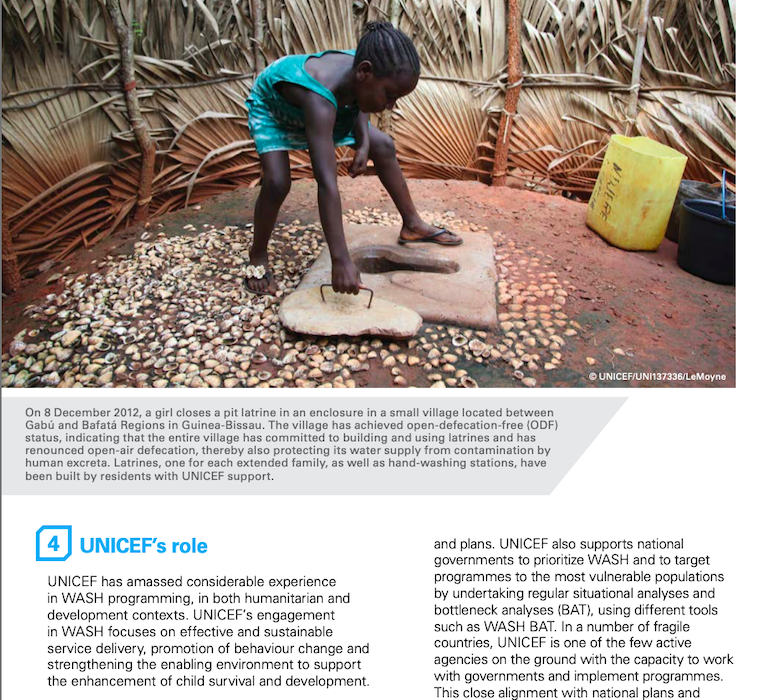

Source: UNICEF
While these tips may seem common for all appeals, it’s essential to act on them more rigorously now. Since it’s tougher to convert an audience virtually, your messaging and resources have to be more compelling.
Step 2: Identifying and segmenting donors
With your case for support ready, your next step is to segment your donors to plan your communication with them.
Prospective donor classification
When classifying prospective donors, there are two aspects you have to consider:
- How closely involved they are with the organization
- At what stage of the solicitation process are they likely to be on
Keeping these in mind, here’s how you can classify your prospects:
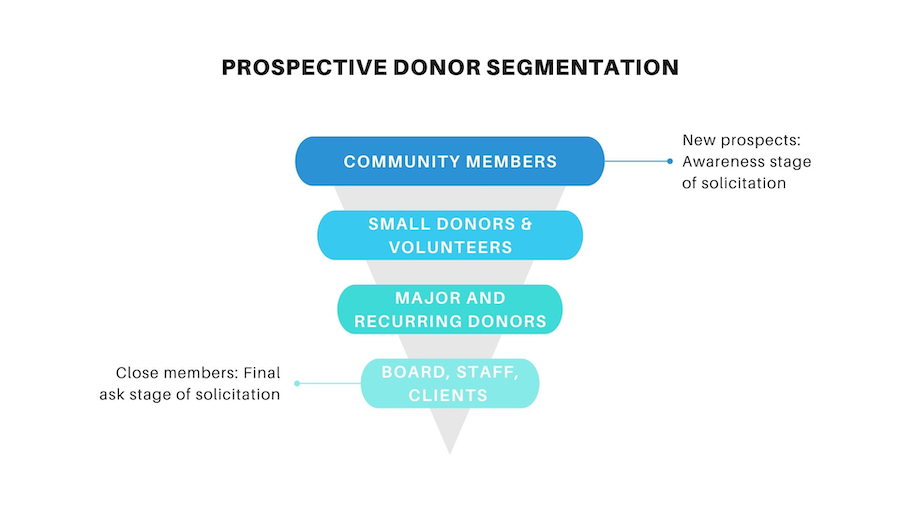

How closely involved they are with the organization
- Community members: These are prospects in the community who might not be fully aware of your organization and efforts.
- Small donors and volunteers: These are people who have been involved with your organization earlier but on a smaller scale. You may have to remind them about your work.
- Major & Recurring donors: This segment has been involved with you very closely. They most likely will be aware of your efforts, but you may need to inform them if you are changing focus.
- Board, staff, clients (if possible): These are the people who work with your organization and will be aware of what you have been doing.
At what stage of the solicitation process are they likely to be on
- Awareness: This is when you will have to introduce yourself and inform them (or remind them) about your organization and your work.
- Nurturing: In this stage, you have to build a relationship with them to make the ask later. This includes asking them how they are doing, offering support, etc.
- Ask: This is when you ask for a donation or any form of help. However, make sure to ask for help only from those who can. You can derive this information from the nurturing stage.
Note: While it may not be suitable for all organizations, some nonprofits can approach their clients too for donations.
Mapping out communication channel for each segment
There are three significant channels to help you make a fundraising ask virtually:
- Video Chat – Highly personalized, perfect replacement for in-person meets/events
- Phone Calls – Personalized, next best thing after in-person meets
- Emails – Not as personalized as calls and video chats, but enough to grab attention and generate awareness
Given the level of personalization, each channel will be suitable for a particular segment of prospects as follows:
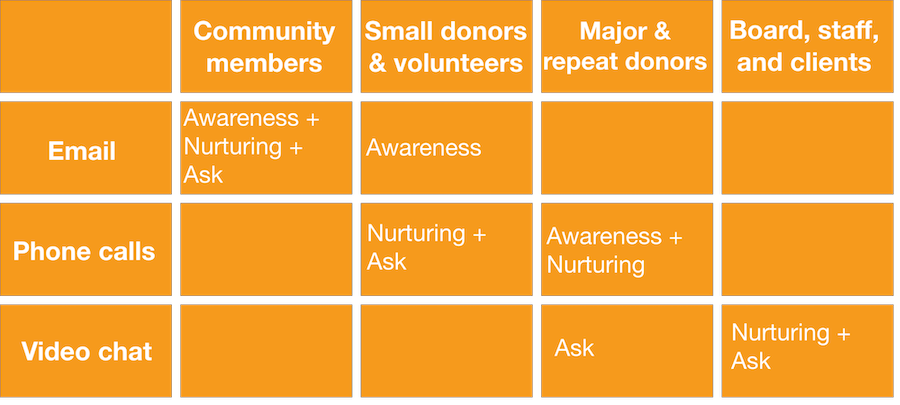

Once you have all this mapped out, you can start writing your emails, calling scripts, and scheduling video calls.
Step 3: Getting in touch
A while back, virtual channels of the communication might have been lower in priority than events and in-person meets. You would have been using them primarily for follow-ups.
However, with social distancing rules, virtual soliciting is your only option for now. Therefore, you need to focus on these more than before to continue fundraising. to keep going.
Here are some tips on how to get the most out of each channel:
1. Email
As per the table above, you will use emails primarily for generating awareness and nurture new prospects. For new prospects, you will also be making a fundraising ask later.
To maximize the impact of your fundraising emails, here is what you need to do.
Prepare the database
Collate all email ids you have into one central repository. You can source these emails from:
- Your CRM – users who may have signed up on your blog/site, registered during an event, etc.
- Third-party sources – You can exchange or buy email databases to reach out to new people.
Apart from the emails, make sure you have other details like their full name, residence, donation history, etc. of these contacts too. These details will be used to personalize your message and filter out the donor segments.
Crafting your messaging for each segment
Next, you will frame your messaging based on the stage of solicitation the prospects are on.
- Awareness
This is when you introduce your organization, talk about what you do and what you have been up to since the lockdown.
Small donors and volunteers would already be aware of your organization. But you need to give them a heads up on your recent activities. While you’re at it, remind them about their previous involvement with you. This is an excellent opportunity to send them your updated case for support too.
- Nurturing
After introducing yourself, you can nurture your donors by involving them in your cause. You can start with a small barrier ask – share your message, or subscribe to your social handles.
You can also offer to support them if you are providing any sort of essential services. Those who do ask for help, make sure to remove them from the email list to avoid sending them the fundraising ask email later.
- Ask
After a few nurturing emails, you’ll get an idea of people who can help you. These would be the ones who haven’t unsubscribed or asked for help but did open all (or most) of your emails.
Filter them out and send them an email asking for their support. Talk about precisely how you’ll use the money and give them other options to help too.
Tips to make your emails more effective
- Make it visually appealing
Humans process visuals faster. With images, you can immediately immerse them into the topic and engage them. Plus, an image can also convey a majority of your message and help you shorten your email copy (another useful tip)
- Make your CTA distinct
You need a bold CTA to grab the reader’s attention and let them know what to do. Most times, people might not even read your email thoroughly but might just see the image and click the button.
Here’s an example of an email from Charity: Water that uses these two tips effectively:
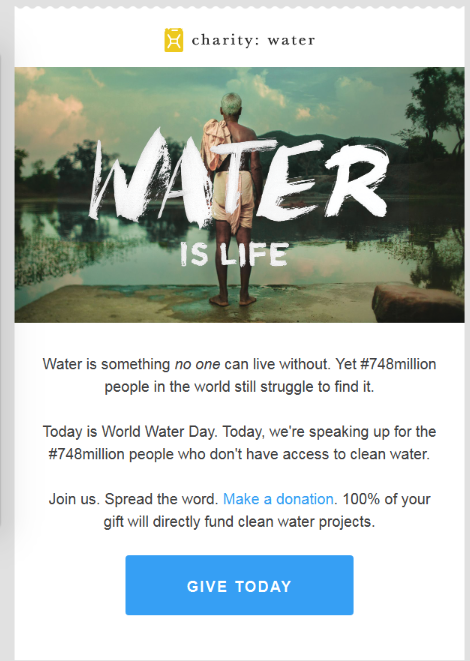

Source: CauseVox
- Optimize it for mobile
Almost 50% of all emails are opened on mobile. If the email doesn’t render on phones correctly, you stand to lose at least half of your prospect’s interest.
2. Phone
You will be making phone calls to nurture your small and major donors, volunteers, and recurring donors. Talking on the phone also gives you an excellent opportunity to understand the prospect’s situation and make a fundraising ask if it’s suitable.
When connecting with donors over a call, you will need to:
Prepare scripts for the conversations
Before you get into making calls, prepare a few scripts to navigate the conversations. You don’t have to follow these scripts word to word, just use them as a reference.
Your cold calling scripts for each stage of the solicitation will be different. They will include objections and conversation points specific to that stage.
- Awareness
Major and recurring donors would already know what you do. These calls will be focused on looping them in on any updates.
For instance, tell them what you have been doing differently, whether you’re changing focus or providing new services during the pandemic. However, make sure that you talk about this after checking upon them.
- Nurturing
Your script to nurture these loyal donors should include open-ended questions like how are they doing, what have they been up to, have they been working, if there’s any way you can help them, etc.
Remember, the objective here is to build a highly personal relationship with the donor, something that they will always remember.
- Ask
After checking up on the donor, you can ask for help if you feel they are in a position to do so. However, make sure you don’t come off as insensitive by asking them for a donation directly.
Amy Eisenstein suggests you ask for permission to ask:
“Would it be ok if I shared some of our needs? OR
Would you be interested in knowing some of our greatest needs and ways you can help?
These are a few ways you can make the Ask without sounding incompassionate. By skiing for permission, you give them control over the topic.”
Amy Eisenstein, Fundraising Influencer and Founder, Campaign Toolkit
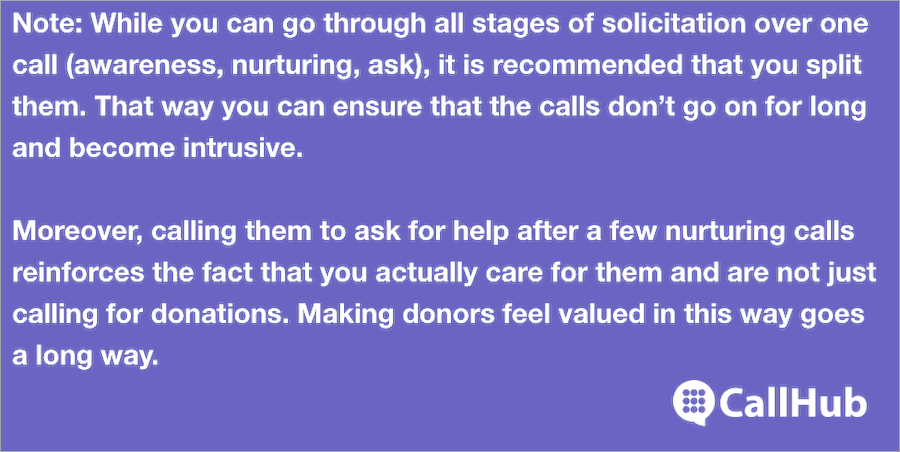

Plan out when you’ll make calls
Based on a scientific study, the best times to call donors or prospects are:
- Early mornings (8:30 am – 11:00 am) – This time, people are usually upbeat and positive, and the calls follow the same tone.
- During lunchtime (1:00 pm – 2:00 pm) – As the day progresses, tones become more negative but pick up during lunch, when people get a chance to recharge.
The window to make quality calls through the day is quite small. Hence, plan out your calls to ensure you can make the most of this time. You can use a call center software to schedule these calls beforehand and stay on top of it.
Alternatively, you can even send an email asking donors for a good time to call them.
Tips to make phone calls more effective
- Keep it conversational: Implement active listening during the call. A 40/60 rule (40% you and 60% them) is a good ratio to follow. Remember, to build a strong relationship; your interaction should be about both of you and not just you.
- Send a follow-up text: People may not give the conversation another thought after they hang up. But this is not what you want. Send a “thank you” text to ensure they don’t forget about the conversation.
Such dedicated follow up reinforces the effort you put in to check up on them, thereby building a stronger relationship. You can send an email too, but given the low open rates, it may not be as effective as a text.
You can use an outbound call center software, like CallHub, with a text through call center feature to automate this process. You can prepare personalized templates and send them immediately after the call at the click of a button.
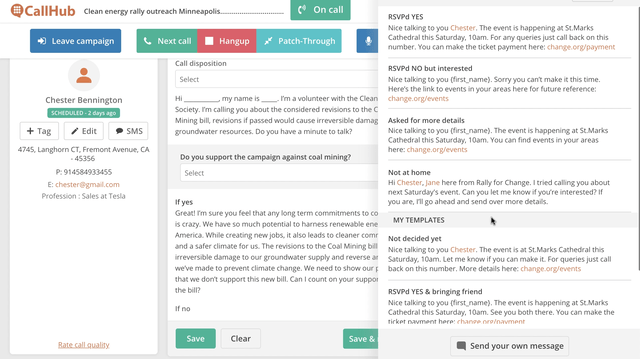

3. Video chat
Video chats allow you to have face to face conversations with major (and recurring) donors and your staff members. Video calls are perfect replacements for in-person meets and present an excellent opportunity to connect with your staff and make a fundraising ask.
There are a couple of things you need to ensure before you get on a video call with these donor segments:
Schedule a time (and software) for the video call
Schedule a good time to connect over a video call beforehand to ensure no one skips it. You can send an invite either by email or call them to confirm a date and time.
However, keep in mind that people may not be used to video calls on a particular software. This could hinder the calls going smoothly. It may even lead to people not accepting connecting over video.
You can avoid this by:
- Letting them choose the software
Most people may not be comfortable with tools like Zoom but might be using FaceTime regularly. If you agree to connect with them over the software they are comfortable with, it increases the chances of prospects turning up for the meeting.
- Offering them a software walkthrough
This is especially true for the older generations. Offer to train them in the software to ensure the call goes well. To make them more open to accepting this offer, highlight the importance of being well-versed with such a tool at the time of social distancing.
Prepare talking points for the chat.
You don’t need to prepare anything on what you have been doing for video calls. This is because you’ll be connecting with staff (who would already know) and donors (with whom you would have had a phone call for the same).
But you do have to nurture them right and make a fundraising ask without seeming too inconsiderate.
- Nurturing
Nurturing board members and your staff over a video call is the same as nurturing donors over a call. You check up on them, ask them how everything is going, and how they have been coping with things. You can talk a little about your plans if they don’t already know about it.
Similar to phone calls, the aim here is to strengthen your relationship with them by showing that you care.
- Ask
The transition to asking for help over a video call is also similar to that over a phone call. Ask for permission and then proceed.
The advantage of video is that it is more personalized and allows you to connect with people, not just voices. This, in turn, adds credibility to the conversation and also reduces decision-making time.


Tips to make video calls more effective
- Prepare a few slides – When you start speaking, there is a chance that the donor may lose interest since they won’t be as actively engaged. However, you can keep them hooked with a brief presentation with strong visuals. Your case for support will come in handy here too.
- Try to have a group call (if possible) – Humans are social animals, and social distancing is not helping. This is why a group call may sound more enticing to donors. Plus, in a group call, you can also introduce them to each other and boost engagement.
Here’s an example of how the Jewish Voice for Peace held a group call on Zoom (apart from the live stream on YouTube) to bring people together and encourage them to take action. It turned out to be quite a success.
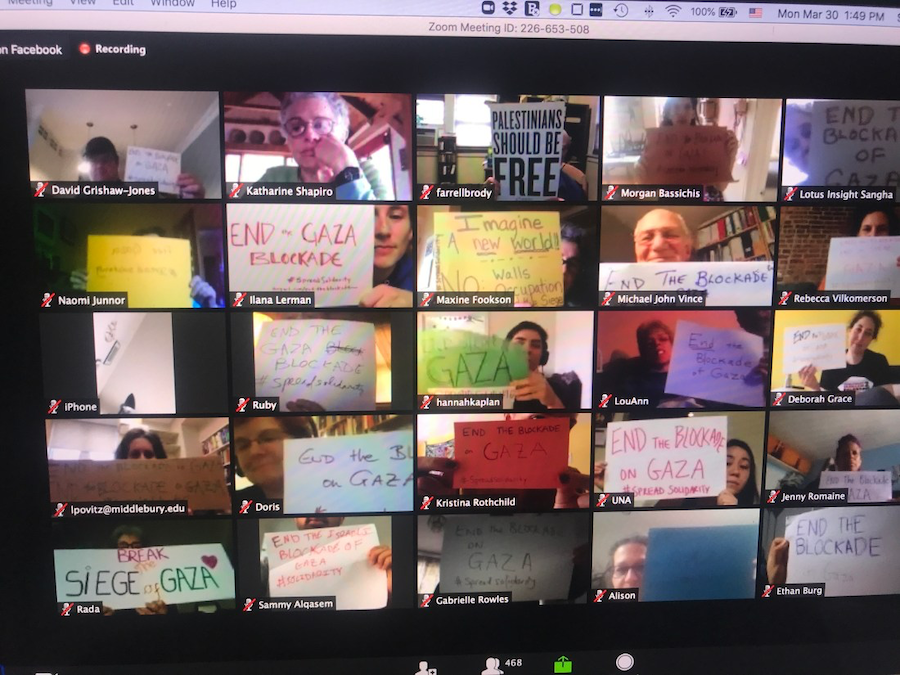

Source: Jewish Voice for Peace
Step 4: Follow up
After making the fundraising ask, the final step of the virtual solicitation process is to follow up with everyone. The messaging for each follow up will depend on the classification of prospects as follows:
- Prospects who helped (by donating money, resources, or volunteering)
Thank everyone who helped and let them know how they made an impact. Keep these prospects in the loop for any more updates.
Check-in with them regularly to understand how they are doing and ask them to help again only if suitable.
- Prospects who couldn’t help
A lot of your prospects wouldn’t have been able to help you out. Don’t break it off with them. Check up on them regularly. Offer your support, if possible.
Ask them to spread the message to make them feel like they can make an impact no matter what. Maintain the relationship so that they remember you when things go back to normal for them.
While it’s critical to follow-up with everyone to strengthen relationships, you have to strike a balance between your outreach and returns.
To achieve that, you can prioritize phone and video calls for the first group and mass texting for the second.
Peer to peer texting would be the perfect solution to check up on prospects who couldn’t help. Since it is highly personalized and conversational in nature, you’ll be able to reach out to more people with half the effort and cost.
To conclude
The transition to virtual communication might be difficult. But, it is now a necessity and not just a good-to-have option. Hopefully, these virtual fundraising tips guide you in the right direction to make a successful plan for the same.
In case there’s anything we missed, do let us know in the comments below.


